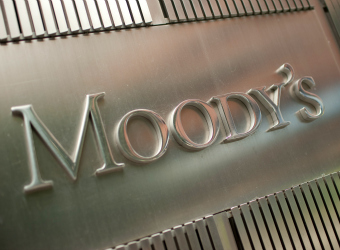Moody’s Investors Service has affirmed on Friday Egypt’s long-term issuer and senior unsecured bond ratings at B3. The outlook remains stable.
The rating affirmation was based on Moody’s view that the B3 rating appropriately captures Egypt’s credit risk profile.
“Very weak government finances will continue to constrain the rating pending further clarity on the sustainability and impact of the reform programme. While Egypt’s external liquidity position has significantly improved over the past 12 months, the increase in international reserves has been mainly driven by debt-creating inflows, thus also raising the level of external debt and foreign-currency denominated debt.” Moody’s said.
The stable rating outlook has reflected Moody’s view that upside and downside risks to the rating are balanced. Reform progress has been impressive. However, while political stability has improved to some degree, reform momentum may face headwinds, including from the presidential election set to take place by May 2018, the rating agency added.
“Visibility on the extent to which the reform programme will materially improve the sovereign credit profile in the coming years remains limited.”
Moody’s has also affirmed the provisional senior unsecured (P)B3 Medium-Term Note programme rating. Egypt’s country ceilings stay unchanged at B2/Not Prime (NP) for the foreign-currency bond ceiling, Caa1/NP for the foreign currency deposit ceiling, and Ba2/NP for the local-currency country risk ceilings.
Moody’s further said it expects Egypt’s credit profile to remain heavily influenced by the government’s very weak government finances for a sustained period, with already high fiscal deficits continuing to grow in nominal terms over the coming years and declining only gradually as a percentage of GDP.
Based on preliminary estimates, the general government fiscal deficit reached around 11 percent of GDP in fiscal year 2017 (ended 30 June 2017), down from 12.1 percent in 2016, and will decline to around 10 percent in the current fiscal year according to the rating agency’s forecast. Moody’s estimates that the general government’s primary deficit shrank to 1.8 percent of GDP in fiscal 2017 from 3.7 percent the year before, and will start to show small surpluses from 2019 onwards.
As a consequence, Egypt’s government financial strength will remain very weak for the foreseeable future, with debt and debt affordability metrics continuing to exceed by some margin the median for B3-rated sovereigns, the rating agency said. The debt-to-GDP ratio likely peaked at 100 percent in fiscal 2017 and Moody’s said it expects that it would decline to about 90 percent by 2019, still a very high level.
Monetary tightening in response to rapidly rising inflation has driven up the government’s domestic funding costs, with the cumulative 700 basis points rise in the Central Bank’s policy rate having driven one-year T-bill rates to above 20 percent. Moody’s expects interest payments to remain very high, accounting for close to 40 percent of revenues over the coming two to three years.
Set against that negative driver, macroeconomic stability has been broadly maintained despite the negative inflation shock resulting from the credit-positive foreign exchange regime liberalization on 3 November 2016. Moody’s projects that real GDP growth has held up well, at 4 percent in fiscal 2017, and that it will continue to pick-up in the coming years.
External liquidity has also improved. Reduced uncertainty about exchange rate policy, elimination of the parallel market and unlocking of multilateral funding following the exchange-rate liberalization has led to an increase of the Central Bank of Egypt’s net international reserves to $36 billion at the end of July from $15.5 billion a year earlier. The increase in reserves was largely the result of debt-creating inflows, with external debt almost doubling to an estimated 33 percent of GDP in fiscal 2017 from around 17 percent the year before. However, repatriation of private remittances through the formal banking system, and to a lesser extent foreign investor participation in the stock market and FDI inflows also contributed to the increase.
